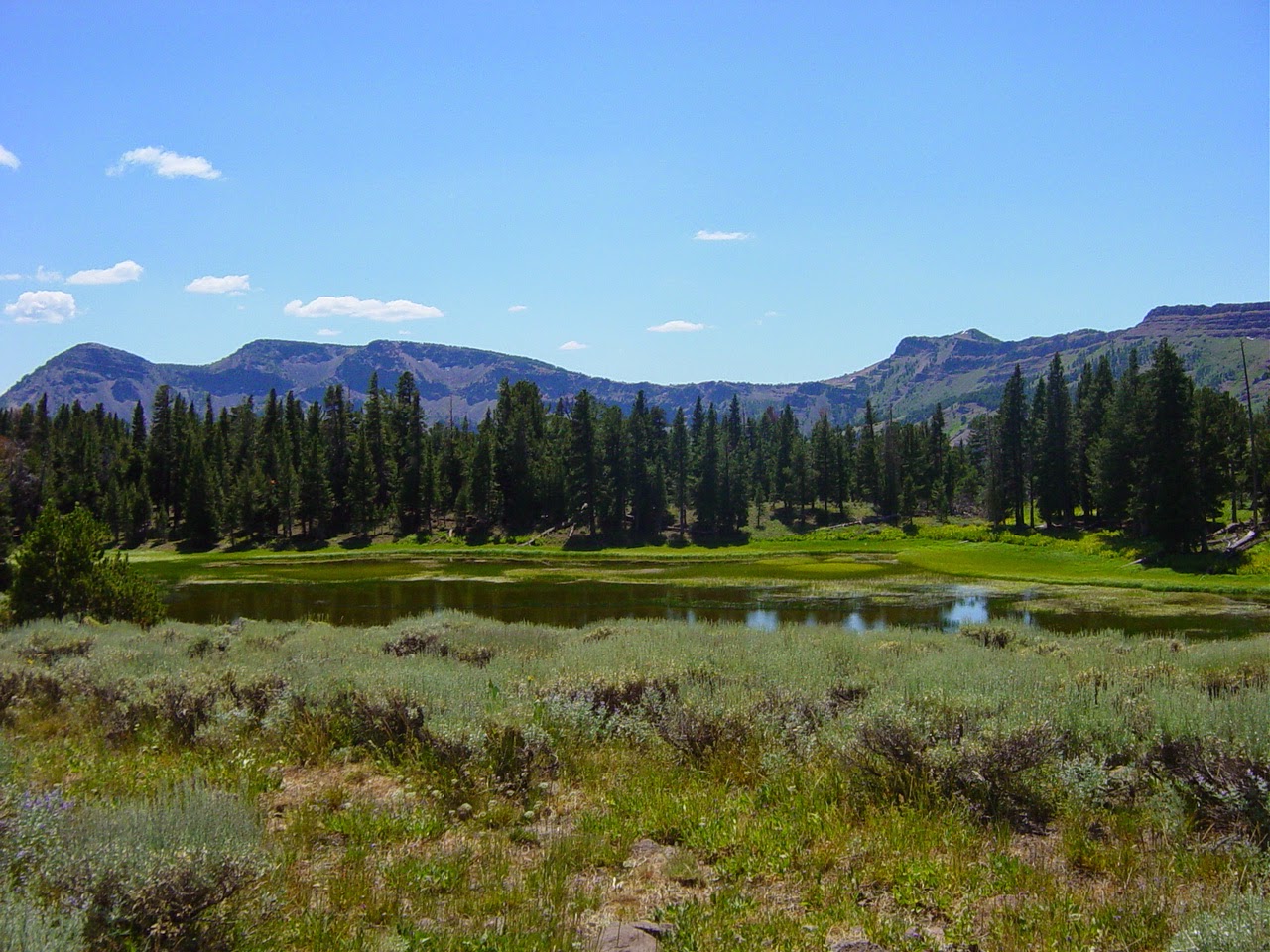 |
| Linderman Lake in the South Warner Wilderness in Modoc County, California |
The Shaw Historical Library — an affiliate of the Oregon Institute of Technology in Klamath Falls, Oregon — is a bioregional archive of human and natural history for the "Land of the Lakes," a large bioregion encompassing south central Oregon, southeastern Oregon, northeastern California, and northwestern Nevada. Published annually, this year's Journal of the Shaw Historical Library commemorates the passage of the 1964 Wilderness Act for its 50th anniversary. Titled, Why Wilderness...50 Years of Wilderness in the Land of the Lakes, the journal — more of a book, really — explores wilderness areas of the region with personal accounts, essays, maps, and beautiful color photography. Why Wilderness... features essays from local ecologist and professor emeritus of biology at SOU, Frank Lang; executive director of Oregon Wild, Sean Stevens; hiking guide author Bill Sullivan; Crater Lake National Park Historian, Stephen Mark; regional editor for the Klamath Falls Herald and News, and Chair of the Shaw Historical Library Journal Committee, Lee Juillerat, and many more, including an essay from myself, Luke Ruediger
Below is my essay featured in Why Wilderness...50 Years of Wilderness in the Land of the Lakes. Copies of the journal can be purchased for $20.00 from the Shaw Historical Library website.
Why Wilderness?
 |
| Summit Lake and the Diamond Peak Wilderness |
Wilderness
is a place on the landscape acknowledged for its wildness, a refuge from the
industrialization of our modern world. In some cases it exists as a political
reality, in some cases it does not and remains imminently threatened. Wilderness
can be a majestic mountain paradise or dusty sagebrush flat speckled in bunchgrass
and teeming with antelope; it can be an impenetrable slope of chaparral or
quiet oak woodland; it can be a wild blue river in a deep rocky canyon or a
plateau of scrubby lodgepole pine. It is a place where wolves can howl, elk can
wallow, cougar can scream, salmon can spawn undisturbed in streams, and all
things wild can live free. Where fire, flood, extended drought, volcanic
eruptions, violent storms, and other forms of natural disturbance sculpt
countless unique biological communities in a vast mosaic across the face of the
land. Either sublime and dramatic, or seemingly typical and lacking in scenery,
wilderness exists as a blank space on the map, yet fills an important void in
our society.
Wilderness
is a refuge for all wild things, where the forces of nature have shaped
forests, grasslands, rivers, valleys, and peaks, and where the greedy hands of
industry have yet to reach. Wilderness has not been commodified. It exists
outside the current base of capital where resources are steadily churned into
profits at the expense of our earth and to the detriment of future generations.
Wilderness is the only landscape in our society where spiritual and ecological
values outweigh economic values and the pressure of global markets to plunder
local resources. Wilderness exists as an acknowledgement that exponential
growth and development are threats to the earth and our own wellbeing.
Wilderness
represents humility and restraint in a society where such values are distinctly
lacking. It provides a feeling of reverence not found within the confines of
the Wal-Mart reality. It offers a deep sense of place, and a respect for that
place, to all that are open to it. Wilderness provides a connection, a window
into the past and hope in the face of an uncertain future. Wilderness, through
its silent persuasion, its awe-inspiring beauty and its untapped abundance,
provides us with a way forward.
Wilderness
is not land free of human influence; it does not ignore the stewardship of
indigenous people nor negate their legacy. Wilderness is a reflection of its
history, yet largely free from the homogenizing imprint of modern industrial
society. Wilderness is stewardship and management for biodiversity, trumping
tree plantations, logging roads or strip mines.
Wilderness,
although a modern human construct, provides an immersion in nature that builds
deeper relationships, spiritual ties and stronger land ethics. Our ability to
build a new society based on sustainable, responsible and respectful
interactions with the natural world will depend upon our sense of humility,
restraint and interconnectedness.
Through wilderness we can once again discover these ancient traditions.
Through wilderness we can once again discover these ancient traditions.
Luke Ruediger
2/2/14
 |
| Crater Lake National Park, although the crown jewel of the Land of the Lakes, it has no protected wilderness. |

No comments:
Post a Comment